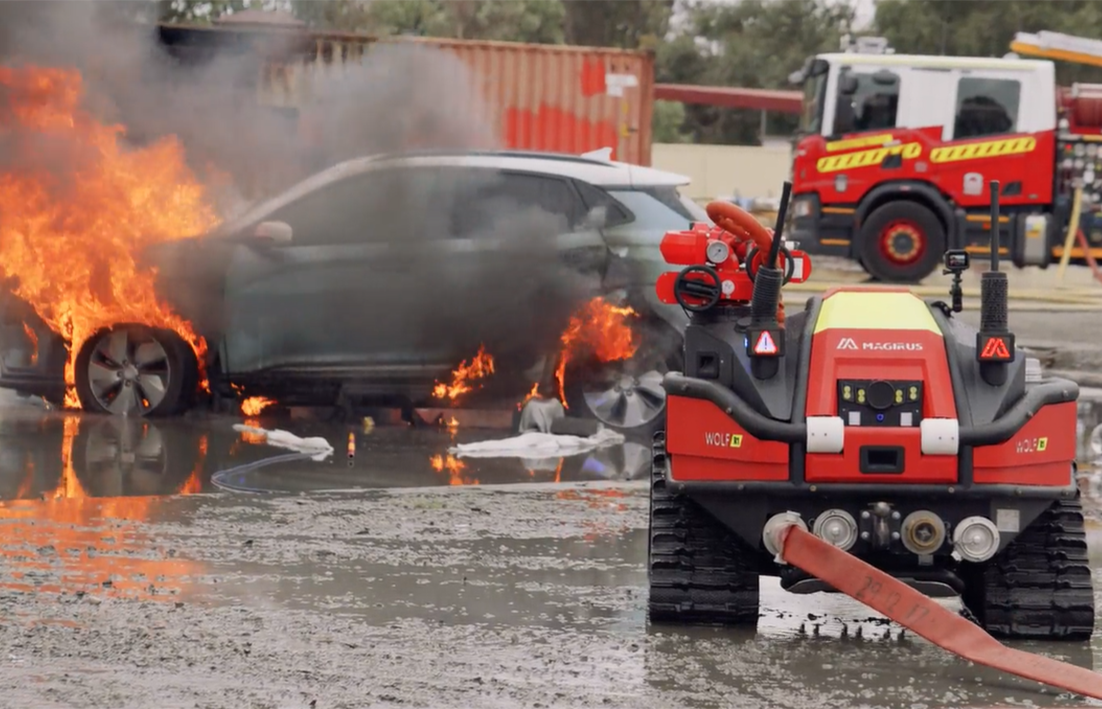
ROBOTICS and other new technology are being trialled to combat complex firefighting operations such as electric vehicle (EV) fires, in response to an increasing number of lithium-ion battery-powered vehicles on the roads.
Emergency Services Minister Stephen Dawson said EV lithium-ion battery fires create new challenges for firefighters with the fires producing a highly flammable vapour and jet-like flames with temperatures reaching up to 1000 degrees celsius.
As part of a Department of Fire and Emergency Services (DFES) training exercise at their Forrestfield academy, a remote-controlled firefighting robot was put to the test to simulate and evaluate response strategies for EV fires.
Firefighters also undertook a range of strategies using new technologies to assess different extinguishing products designed for lithium-ion battery fires, including a thermal fire blanket to control and smother the fire.
Robotic technology is currently being operationally assessed by DFES and other Australian and international firefighting agencies as a way of reducing potential hazardous exposure to career and volunteer firefighters.
More than 60 industry experts attended the exercise including specialists from EV FireSafe and government representatives from a range of agencies.
While there are around 180,000 EVs on Australian roads there have been no recorded EV fires in Western Australia.
Mr Dawson said as Western Australians embrace renewable technology first responders are working hard to research, trial and adapt their capabilities to keep the community safe from the significant threat that electric vehicle fires pose.
“Today’s exercise is a great opportunity for our firefighters and first responder agencies to learn how to handle electric vehicle incidents and the unique challenges that these types of cars can present for emergency services.
“The state government is committed to ensuring our emergency services are well equipped and prepared for all types of incidents and it’s vital to investigate and assess what robotics and automation technology can do to complement our existing resources.”
Fire and Emergency Services Commissioner Darren Klemm said unlike conventional vehicles, electric vehicle fires cannot always be fully extinguished using water and standard fire extinguishers and instead require specialised training and equipment.
“We are trialling a range of strategies and techniques on an electric vehicle fire including a ‘tactical remote operated vehicle’, testing extinguishing products designed for lithium-ion battery fires and containment using a large thermal fire blanket to cut off the oxygen supply.
“DFES is committed to continuing to work on this emerging risk with specialists in this field and other state government agencies to ensure our response to vehicle fires remains fast, effective and saves lives.”